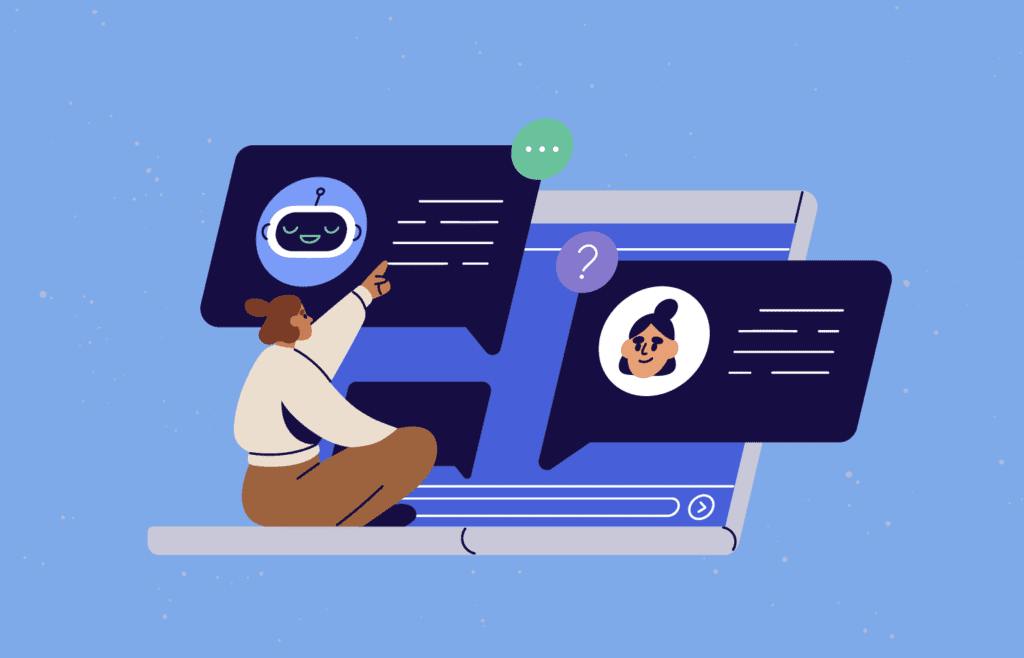The future of digital marketing is taking shape before our eyes. The deprecation of the third-party cookie, increasing privacy regulations, market fragmentation, and rise of artificial intelligence (AI) is keeping all marketers on their toes as they quickly shift and adjust strategies to accommodate this new reality. AI in particular has been a hot topic recently in the industry headlines because of the powerful advances it is bringing to digital marketing.
At this year’s Google Marketing Live, Google announced a number of new and exciting applications of AI within their marketing platforms. One such application is the inclusion of a conversational assistant within Google Ads which allows advertisers to develop creative assets, come up with headlines, and recommend optimal keywords simply by conversing with the AI chat bot. Also introduced is AI Snapshot, which renders a summary paragraph addressing the user’s search query, and improvements to Performance Max which uses machine learning to automate and optimize bids and placements based on performance goals.
These features amongst the many other AI-powered solutions that Google has rolled out over the years, like search’s value-based bidding or DV360’s custom bidding capabilities, has made it clear that AI is becoming an important tool within a marketers tool box. However, at the end of the day, these AI features are just additional tools that need to be refined to deliver meaningful results. It is therefore up to digital marketers to understand how AI and data are being applied to effectively drive business performance.
How can marketers plug into Google’s AI to drive success?
Marketers must become conductors. From budgeting and bidding to audiences and creative, the marketer’s inputs are key in guiding AI to deliver the best ROI and new avenues of growth for brands. AI is a powerful enabler that requires the expertise of a marketer and the data strategy to feed the algorithms. Moreover, unless the AI is fueled with data and insights that are exclusive to the brand, the brand will get similar results to everyone else.
Google’s advertising offerings have effectively commoditized AI and removed the ability for brands to differentiate themselves within this space. As a result, brands must redefine their digital strategies and focus on the unique inputs they can provide to steer the models and maximize results. Therefore, it is essential for brands developing their Google strategy to prioritize identifying the key data signals and build the connected data pipelines to train Google’s AI algorithms towards effectively driving business performance. In other words, AI transformative ability resides in the quality of a brand’s first-party data inputs.
Feeding the right data into the algorithm
Knowledge of your customers and your business are key factors in guiding AI to success. Customizing first-party data inputs to improve your cross-channel bid strategies and/or deliver on performance marketing goals requires feeding brand-specific data signals back into Google’s algorithms to train campaigns on how to better acquire customers based upon the brand’s specific goals. There are numerous methods to influence Google’s AI models but broadly speaking, Conversion Values and Audience Signals remain the fundamental core and the opportunity for brands to exert the most influence.
The most impactful way to influence Google’s AI algorithms is to ensure that all conversions – online, offline, micro – are taken into account. Brands must accurately define and test which conversions enable the AI to optimize towards delivering the greatest business impact. Feeding online conversions via floodlights or offline conversions via Campaign Manager’s (CM) API into the models is critical to ensure all conversions are incorporated into the optimization models. Moreover, forthcoming features in GA4 like the option to export GA4 conversion goals into CM as floodlight activities will make this even easier to provide additional signals into the model. And enhanced conversions functionality helps close both online and offline measurement/attribution gaps by passing first-party data for conversions that would otherwise be unmatched to media exposure.
In tandem, defining the value of different conversions to your business helps Google’s AI understand which conversions are most important and should be prioritized in bidding. Applying value-based bidding strategies will drive more consistent conversion quality and ultimately profit for your organization. Leveraging smart bidding strategies like Maximize Conversion Value or Target ROAS in Search Ads/Google Ads or Custom Bidding in Display & Video 360 allows brands to optimize toward metrics associated with every conversion, such as profitability, or internally calculated metrics such as customer lifetime value. And if a brand is not able to or does not want to expose data like product margins externally, everything can be indexed to relative values and hidden multipliers applied so that the data is shared semi-anonymously.
Another way brands are able to orchestrate Google’s AI models is to provide as many audience signals as possible. Brands that are able to leverage unique customer behavior from web analytics and/or first-party audiences from their CRM are able to shorten the AI training period and accelerate the AI’s ability to drive results. For example, using first-party audience lists based on valued actions, browsing behaviors, or offline data that are captured in floodlights and/or conversion tracking are excellent signals to help inform the models for bidding as well as remarketing audiences. Using custom floodlight variables can add further context and meta data to your floodlight tracking which can be used for additional segmentation and integrated into your bid strategy. Lastly, leveraging specific features like new customer acquisition goals prioritizes the model to seek out new customers and allows marketers to bid more effectively on new customers over existing customers. In sum, having a rich first-party data asset that clearly identifies who your customers are and what they are looking for is essential in helping to guide the AI in the right direction.
Conclusion
In conclusion, AI combined with digital marketer expertise can multiply campaign performance and drive business outcomes, but only when the infrastructure and responsibly collected first-party data signals are made available. A robust conversion measurement strategy, tagging infrastructure, and audience strategy are crucial inputs for Google’s AI to deliver value for your organization. To be competitive today, brands must adjust their Google strategy to account for how AI can assist in what they are doing. AI-based targeting and measurement is the new status quo, and it is up to marketers to bring forward strategic direction to truly unlock the competitive advantages promised by AI.














